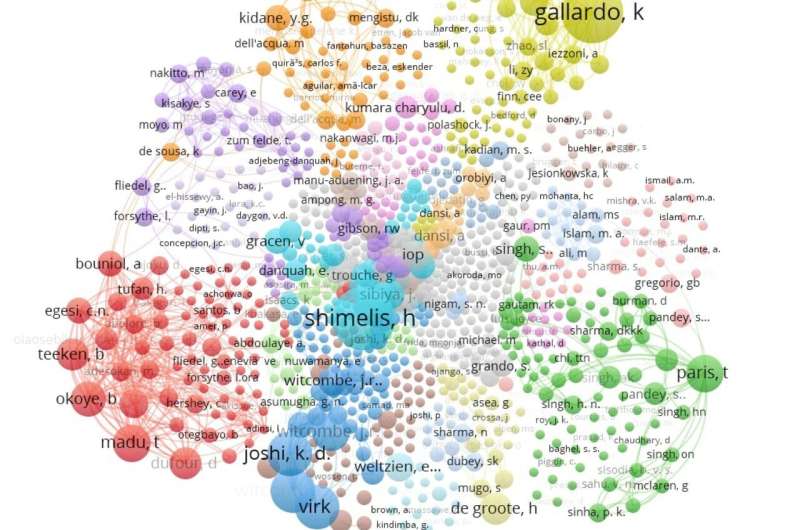This article has been reviewed according to Science X's editorial process and policies. Editors have highlighted the following attributes while ensuring the content's credibility:
fact-checked
trusted source
proofread
40 years of crop research shows inequities

A systematic analysis of 40 years of studies on public crop breeding programs found that cereal grains receive significantly more research attention than other crops important for food security, such as fruits and vegetables; only 33% of studies sought input from both men and women household members; and there is significantly less research in South America, the Middle East and North Africa than in sub-Saharan Africa.
The study, published in Nature Plants, was authored by Cornell researchers, led by the Priority Setting team of the Feed the Future Innovation Lab for Crop Improvement (ILCI), and colleagues from Notre Dame University and the Center for International Forestry Research and World Agroforestry.
"One question this study begs is: What is the cost of getting this wrong?" said Martina Occelli, co-lead of ILCI's priority setting team and first author of the paper. "There is a lot of investment in the development of a new crop variety. And if the characteristics of the variety you're developing don't match what is needed and desired, then that time and money is wasted."
When crop breeders develop new varieties, they seek input from farmers to ensure they're prioritizing the traits most important to the people who are growing them, such as which pests are most problematic, whether higher yield or faster ripening is most important, and whether the farmers have access to irrigation.
However, although only one-third of trait prioritization studies collected information from men and women household members, when they did collect such data, 84% showed sex-based differences in preferred traits. For example, sorghum researchers in Mali who surveyed both men and women found that women were allocated the least fertile fields to manage. Phosphorus availability was especially poor on these plots, so the breeders specifically selected varieties that could still thrive in phosphorus-deficient fields.
"It's assumed that men and women have equal farming conditions, but that's usually not the case," said Hale Tufan, associate professor in the School of Integrative Plant Science (SIPS) Plant Breeding and Genetics Section in CALS. "In that context, if you develop a variety that's too dependent on phosphorus inputs, you've started women off at a deficiency. Because of that, women are going to get less for their labor and time because the very soil they are growing on is unequal."
The researchers also found that only 12.5% of studies involve growers in on-farm participatory experiments, in which they test varieties in their own fields with their own management practices.
"In any other sector, it would be unthinkable to develop a new technology—which is what new varieties are—without feedback loops from the people who are going to use them," Tufan said. "Participatory research is perceived to be more difficult; it takes more time and engagement with farmers, but it leads to much better data and better adoption rates once a variety is released."
Uneven geographic distribution of studies also stymies efforts to ensure global food security, said Occelli, who is also a research associate in SIPS. Over half of all trait prioritization studies in the past 40 years have been conducted in sub-Saharan Africa. Only 6% of studies were conducted in South America and only 2% in the Middle East and North Africa.
Occelli and Tufan said they hope with this work to reach donors, funding agencies, and international research teams to share the need for more equitable research by crop, geographic location, gender, and more.
"This type of trait preference information requires time and budget, both of which are limited, so we need to be more intentional when investing in crop breeding programs," Occelli said.
"We need to correct the imbalance and be equitable and thoughtful about why we're privileging certain crops and regions over others," Tufan said. "We hope that bringing attention to these imbalances may lead to change."
More information: M. Occelli et al, A scoping review on tools and methods for trait prioritization in crop breeding programmes, Nature Plants (2024). DOI: 10.1038/s41477-024-01639-6
Provided by Cornell University




















